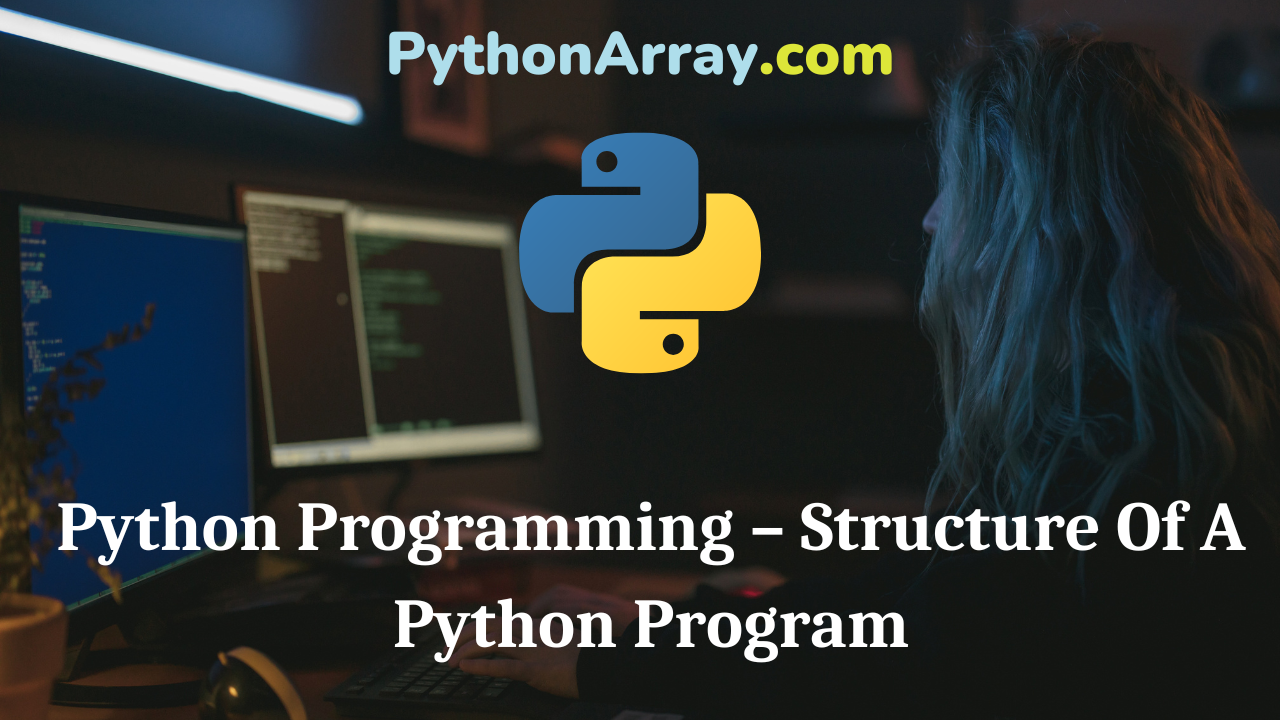You can learn about Functions in Python Programs with Outputs helped you to understand the language better. Python Programming – Structure Of A Python Program In Python, all function definitions are given at the top followed by statements also called a top-level statements. Internally Python gives a special name to top-level statements as _main_. A python begins the execution of a program from top-level statements, i.e., from _main_. def statements are also read but ignored until called. The top-level statements are not indented at all. In the following example lines 5, 6, 7, and 8 are called top-level statements. Let’s study the program given in Example 3 to see how statements are executed one at a time. (a) The first statement of a function can be an optional statement – the documentation string of the function or docstring. Python starts execution from the first statement, i.e., line 1. Since it is a comment line so ignored by the browser. (b) the def statement is also read but ignored until called. So, in line 2, Python just executes the function header line to determine that it is the proper function header and the entire function body, i.e., line 3 and line 4 are…
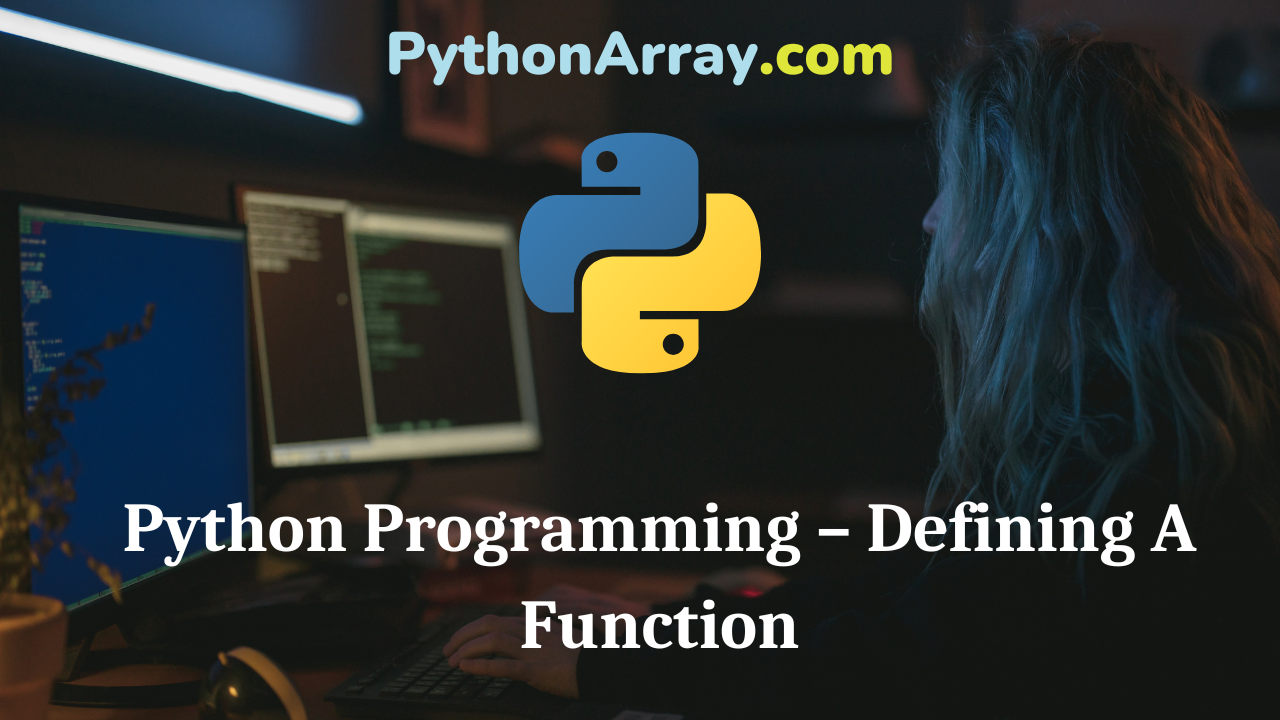
Python Programming – Defining A Function
You can learn about Functions in Python Programs with Outputs helped you to understand the language better. Python Programming – Defining A Function You can define functions to provide the required functionality. Ferre are simple rules to define a function in Python (a) Function blocks begin with the keyword def followed by an identifier, i.e., the name of the function followed by a parenthesized list of parameters and a colon (:) to mark the end of the function header. Next follows the block of the statement(s) that are part of the function. (b) A name used inside a function to refer to the value passed as an argument is called a parameter. Any input parameters or arguments should be placed within these parentheses. You can also define parameters inside these parentheses. (c) Optional documentation string (docstring) is used to describe what the function does. Python Programming – Top-Down Approach Of Problem Solving Python Programming – How To Start Python Python Programming – Print Statement (d) One or more valid Python statements that make up the function body. The function body consists of indented statements and statements must have the same indentation level (usually 4 spaces). The function body gets executed every time…
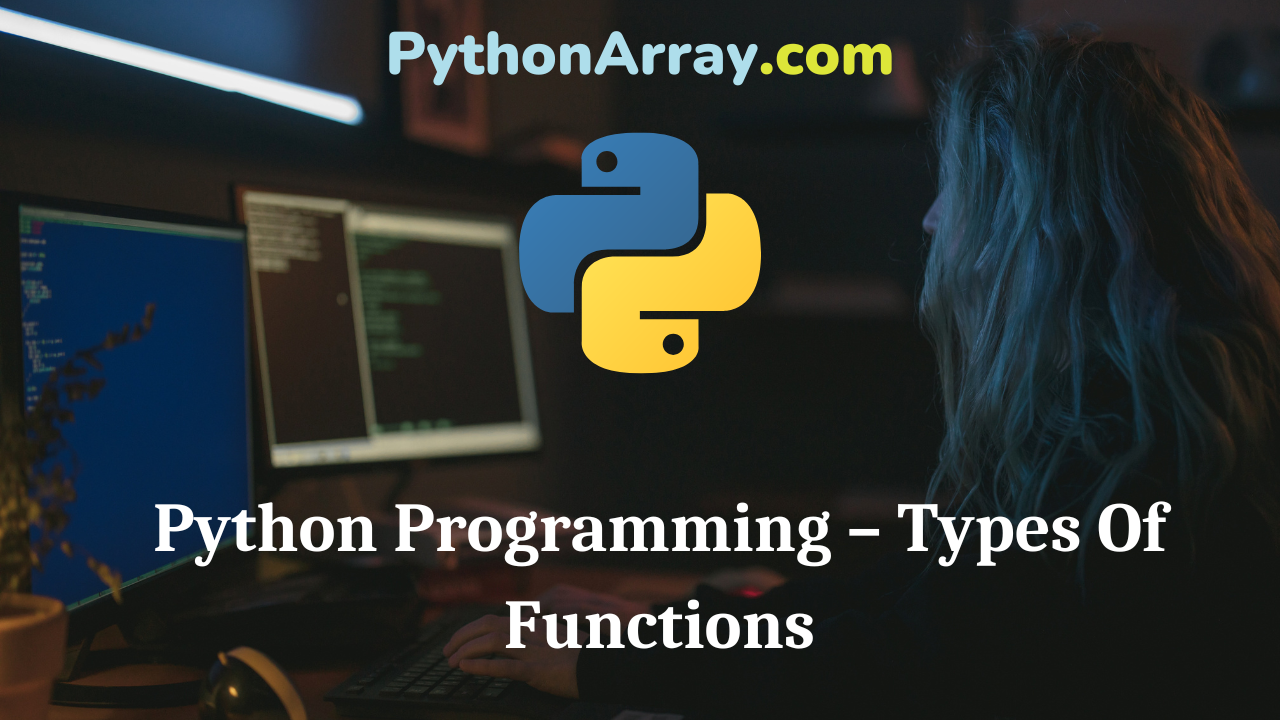
Python Programming – Types Of Functions
You can learn about Functions in Python Programs with Outputs helped you to understand the language better. Python Programming – Types Of Functions Python comes preloaded with many function definitions that you can use or create new functions as per your requirement. Functions are of three types. These are: Module Built-in Functions User-Defined Functions Module A module is a file that contains a collection of related functions and other definitions. Python comes loaded with some pre-defined modules that you can use or you even create your own modules. The Python modules that come preloaded with Python are called standard library modules. Three such standard library modules are the math module, random module, and statistics module. You can make a module available to another program by importing it. For example, if you want a pre-defined function pi ( ), inside your module, you need to first import the module math which contains definitions of pi() in your program. Ferre’s how you import: >>> import math Here’s how you access the name pi that it defines: >>> math.pi 3.141592653589793 Note that you can import modules with the import command. To use a module, you can import it. Usually, import statements occur at the beginning…
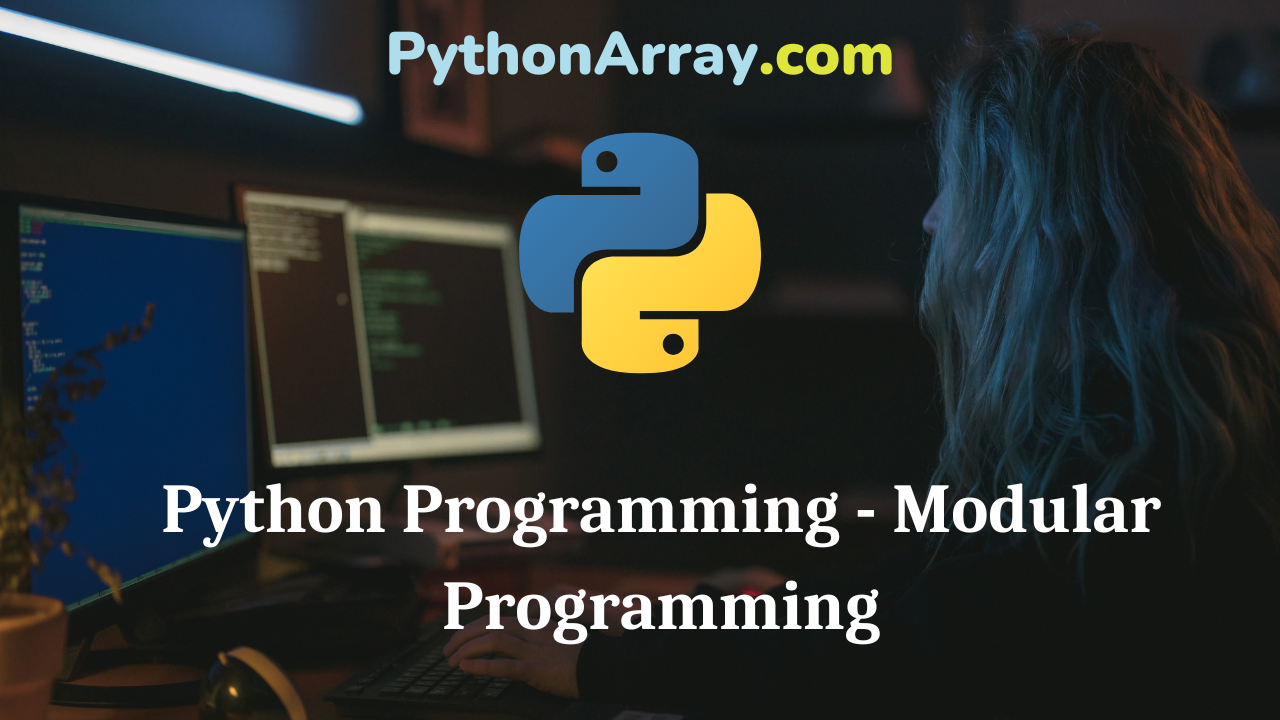
Python Programming – Modular Programming
You can learn about Functions in Python Programs with Outputs helped you to understand the language better. Python Programming – Modular Programming One way to improve the structure of a system is to break down the original problem to be solved into independent tasks called modules, and then execute each module in a pre-defined sequence. The result¬ing design would then contain a network of modules. Breaking down a problem into smaller pieces (modules) allows you to focus more easily on a particular piece of the problem without worrying about the overall problem. In this way, the various tasks can be solved easily. They are more manageable since each module performs a very specific function. Typically, you can code each module independently of the others and test or debug each module separately. Once all modules are working properly, you can link them together by writing the coordinating module (gen¬erally called the root segment or the main module). The coordinating code activates the various modules in a pre-determined sequence (See Figure 10.2). Note that in this Figure, the resulting problem consists of five modules: the coordinating module and the four modules A, B, C, and D. It is, of course, conceivable that a particular…
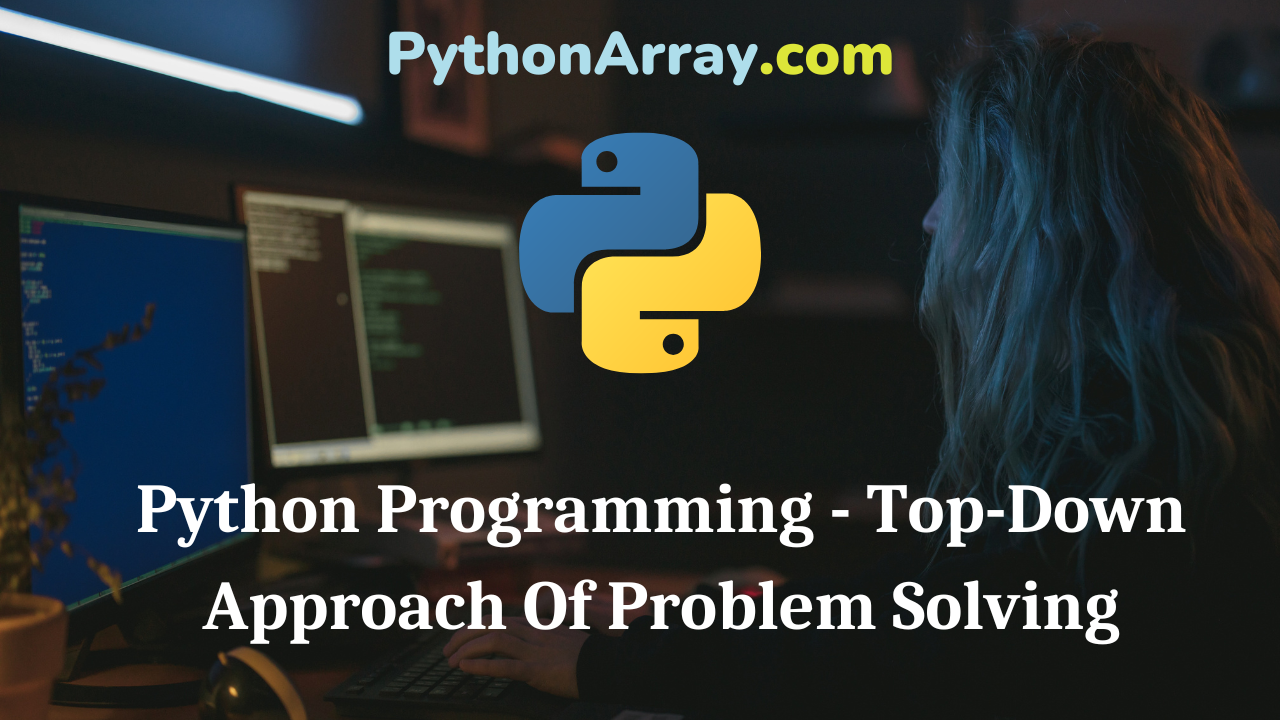
Python Programming – Top-Down Approach Of Problem Solving
You can learn about Functions in Python Programs with Outputs helped you to understand the language better. Python Programming – Top-Down Approach Of Problem Solving Top-down design is the technique of breaking down a problem into various major tasks needed to be performed. Each of these tasks is further broken down into separate subtasks, and so on till each sub-task is sufficiently simple to be written as a self-contained or procedure module. The entire solution to the problem will then consist of a series of simple modules. In top-down design, you initially describe the problem you are working on at the highest or most general level. The description of the problem at this level will usually be concerned with what must be done – not how it must be done. Introduction to Python Programming – The Basic Model Of Computation Introduction to Python Programming – Programming Languages Introduction to Python Programming – Documentation The description will be in terms of complex, higher-level operations. You must take all of the operations at this level and individually break them down into simpler steps that begin to describe how to accomplish the tasks. If these simple steps can be represented as acceptable algorithmic steps,…

Python Programming – Sorting Key And Value
You can learn about Dictionaries in Python Programs with Outputs helped you to understand the language better. Python Programming – Sorting Key And Value Creating the dictionary with a set of key: value pairs can be accomplished if all the data items are known in advance. Dictionaries do not have an inherent order. To impose order while processing a dictionary, you have to sort it using the sorted ( ) function. Looping over the sorted list of keys using sorted(ls), the dictionary content is printed out with the keys in alphabetical order as given below: Is = {‘Uma’:76, ‘Mohan’:85, ‘Beena’:92, ‘Lisa’:28} for s in sorted(Is): # s iterates over the sorted list of keys print(s, ‘is’, Is [s], ‘years old.’) >>> Beena is 92 years old. Lisa is 28 years old. Mohan is 85 years old. Uma is 76 years old. >>> But what if you want to sort by member’s age here, the key= option, i.e., key=ls.get to be exact. For the dictionary value can be achieved by specifying example, for s in sorted(ls, key=ls.get): # value-based sorting print(s, ‘is’. Is [s], ‘years old. ‘ ) >>> Lisa is 28 years old. Uma is 76 years old. Mohan…
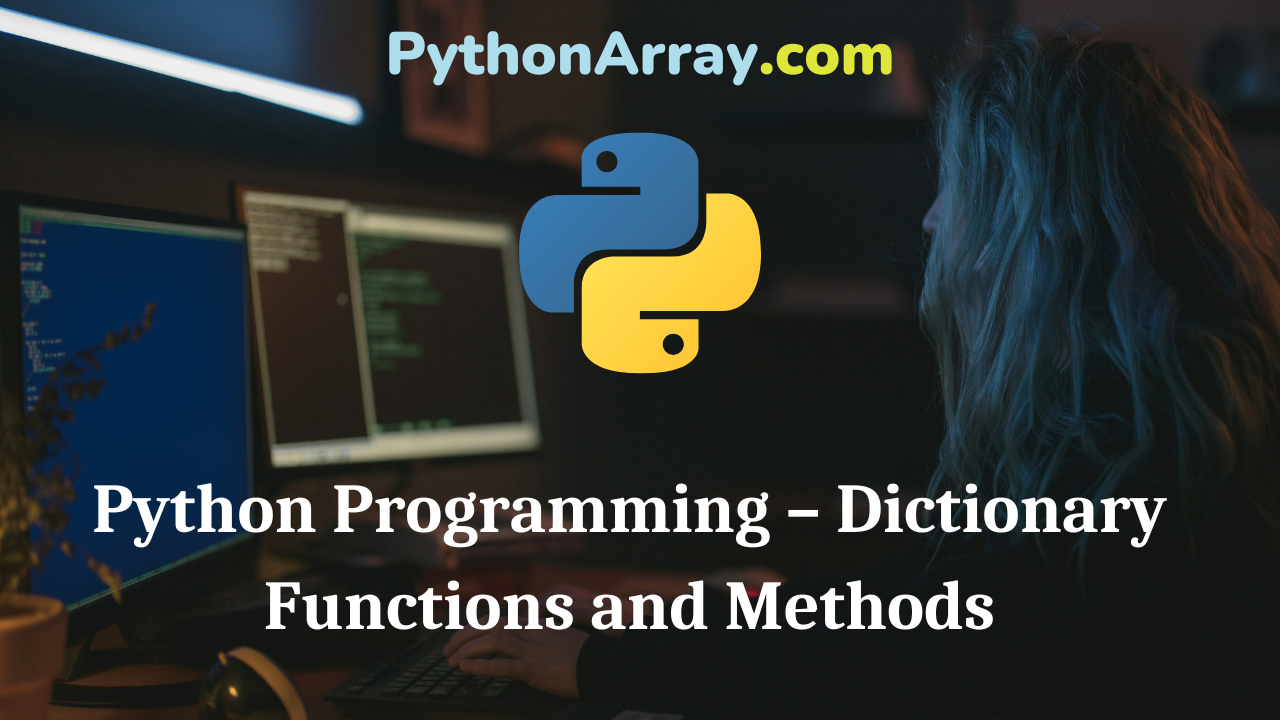
Python Programming – Dictionary Functions and Methods
You can learn about Dictionaries in Python Programs with Outputs helped you to understand the language better. Python Programming – Dictionary Functions and Methods Just like the other built-in types, dictionaries also have methods and functions. dict ( ) The dict ( ) constructor builds dictionaries directly from lists of key:value pairs stored as tuples. When the pairs form a pattern, list comprehensions can compactly specify the key:value list. >>> diet([(‘Amit’, 4139), (‘Ramesh’, 4127), (‘John’, 4098)]) {‘Amit’: 4139, ‘John’: 4098, ‘Ramesh’: 4127} Since dict ( ) is the name of a built-in function, you should avoid using it as a variable name. You can create a dictionary during run time using dict ( ), also called dynamic allocation. Python Programming – Dictionaries Python Programming – Standard Data Types Python Programming – Tuple Functions cmp ( ) cmp ( ) is not supported by Python 3; however, if you are using Python 2 then, cmp ( ) is used to check whether the given dictionaries are same or not. If both are same, it will return 0, otherwise it will return 1 or -1. If the first dictionary has more number of items, than the second one it will return 1, otherwise return…
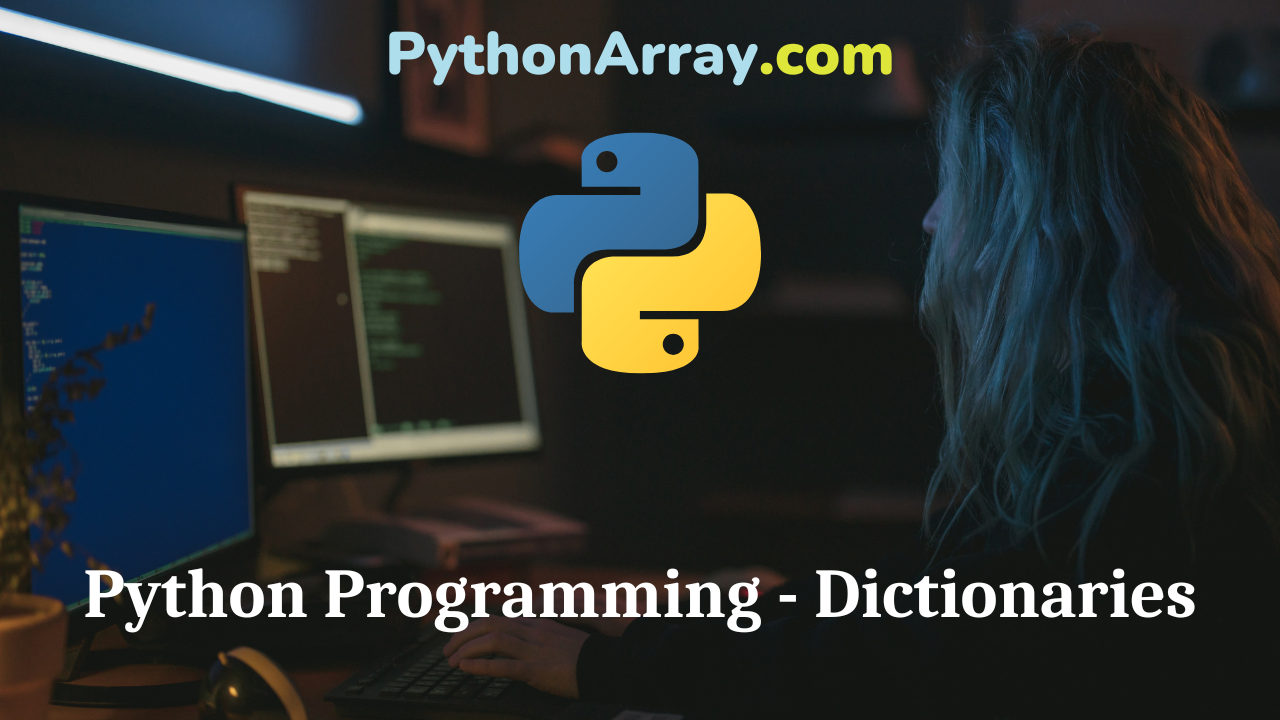
Python Programming – Dictionaries
You can learn about Dictionaries in Python Programs with Outputs helped you to understand the language better. Python Programming – Dictionaries Dictionaries (or diet in Python) are a way of storing elements just like you would in a Python list. But, rather than accessing elements using its index, you assign a fixed key to it and access the element using the key. Dictionaries are like address books. It is used to hold data that are related. For example, if you know a person’s name, you can easily get a person’s details. The person’s name is technically referred to as a key, and any corresponding detail is referred to as the value. Note that the key must be unique as you cannot find the correct information if you have two persons with the same name. Python Programming – Standard Data Types Python Programming – Creation, Initialization and Accessing The Elements In A Tuple Python Programming – Creating Lists The dictionary is Python’s built-in mapping type. This means that dictionaries map keys to values and these key-value pairs are a useful way to store data in Python. Keys will be a single element. Val¬ues can be a list or list within a list,…
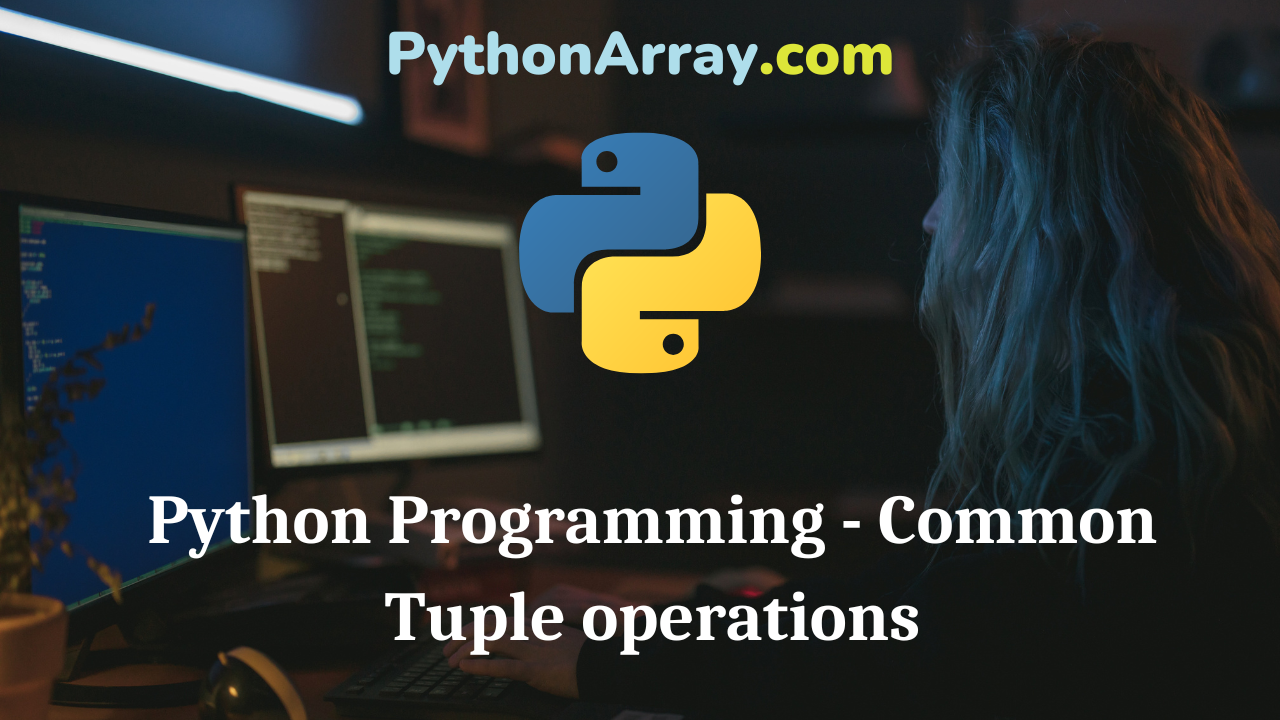
Python Programming – Common Tuple operations
You can learn about Tuples in Python Programs with Outputs helped you to understand the language better. Python Programming – Common Tuple operations Python provides you with a number of ways to manipulate tuples. Tuple Slicing If you want a part(slice) of a tuple, use the slicing operator [ ]. The first value in a tuple is at index 0. Similar to Python lists, you can use the index values in combination with square brackets [] to access items in a tuple. When using positive indices, you traverse the list from the left. For example, numbers = (0,1,2,3,4,5,6) numbers[0] 0 numbers[3] 3 You can also use negative indexing with tuples: numbers[-1] 6 Indexing is used to obtain individual items, whereas slicing allows you to obtain a subset of items. When you enter a range that you want to extract, it is called range slicing. The general format of range slicing is: [Start index (included):Stop index (excluded) :Increment] Here, Increment is an optional parameter, and by default, the increment is 1. For example, # Item at index 5 is excluded numbers[1:5] ( 1 , 2 , 3 , 4 ) # This provides all the items in the tuple numbers[: ] ( 0…
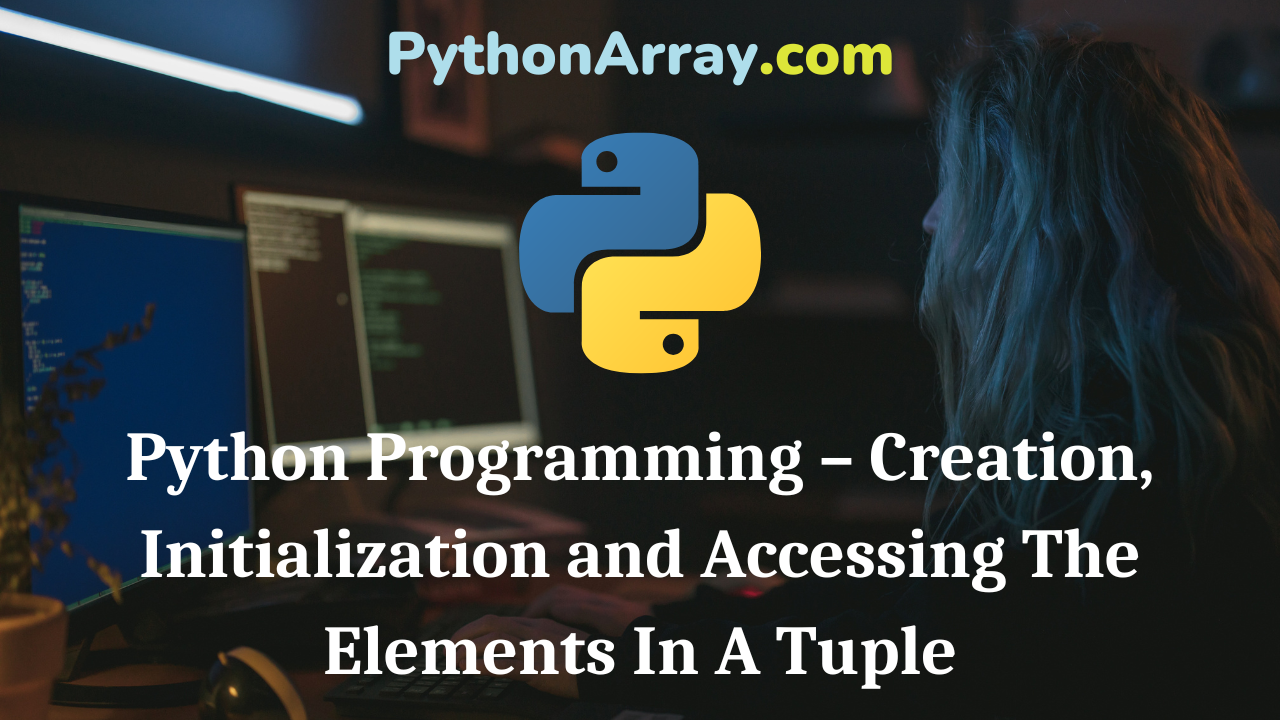
Python Programming – Creation, Initialization and Accessing The Elements In A Tuple
You can learn about Tuples in Python Programs with Outputs helped you to understand the language better. Python Programming – Creation, Initialization and Accessing The Elements In A Tuple To create a tuple with zero elements, use only a pair of parentheses “( )”. For a tuple with one element, use a trailing comma. For a tuple with two or more elements, use a comma between elements. No ending comma is needed here. Tuple Creation Creating a tuple means placing different comma- separated values within parentheses. However, the parentheses are optional. Also, the elements of a tuple can be of any valid Python data types ranging from numbers, strings, lists, etc. For example: >>> tup1 = (‘C++’, ‘Python’, 1997, 2013) >>> tup2 = (1, 2, 3, 4, 5 ) >>> tup3 = “a”, “b”, “c”, “d” Once a tuple is created, you cannot change its values. Tuples are unchangeable. You cannot delete or add elements in a tuple, once it is created. The empty tuple is formed with a pair of parentheses containing nothing. For example: # Demo of zero-element/empty tuple tup4 = ( ) >>> len ( tup4 ) 0 Python Programming – Tuple Python Programming – Sequence Data Types Python…
